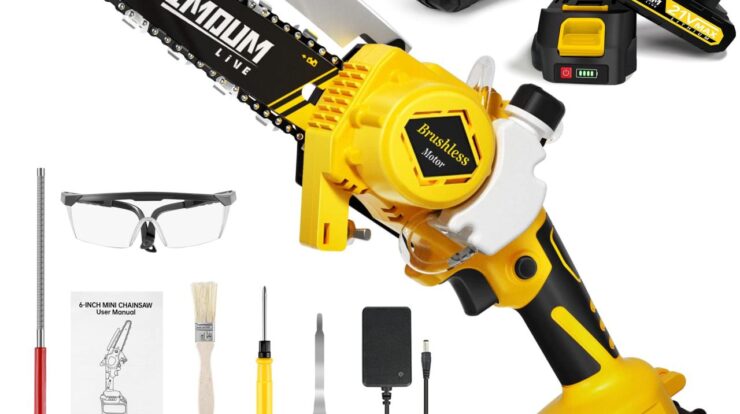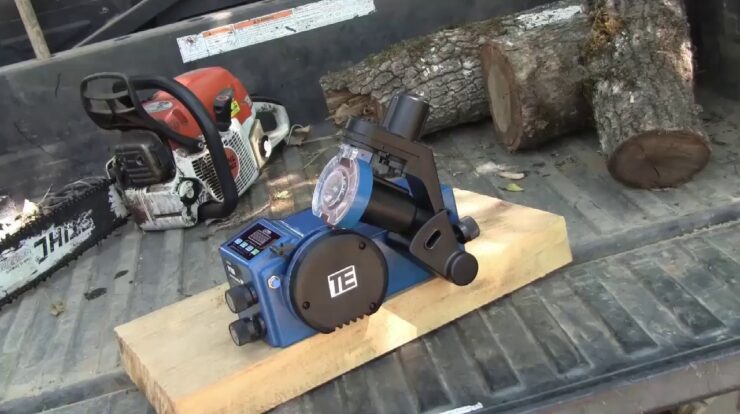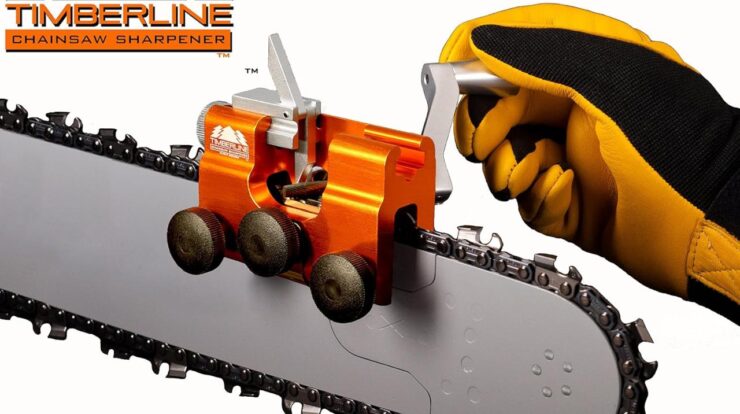Chainsaw sharpeners are indispensable tools for maintaining the sharpness of chainsaw blades, ensuring optimal performance and safety. This comprehensive guide delves into the world of chainsaw sharpeners, exploring their types, operation, and techniques for achieving razor-sharp blades.
From manual sharpeners to electric models, we’ll uncover the advantages and disadvantages of each, providing you with the knowledge to make informed decisions about choosing the right sharpener for your needs. Additionally, we’ll delve into sharpening techniques, safety considerations, and troubleshooting tips, empowering you to sharpen your chainsaw blades with confidence and precision.
Introduction to Chainsaw Sharpeners
A chainsaw sharpener is a tool specifically designed to sharpen the teeth of chainsaw blades. Maintaining sharp chainsaw blades is crucial for optimal performance and safety. Dull blades increase the risk of kickback, reduce cutting efficiency, and strain the chainsaw engine.
Types of Chainsaw Sharpeners
There are various types of chainsaw sharpeners available, each with its own advantages and drawbacks. Some common types include:
- Manual Sharpeners:Require manual effort and skill to use. They are typically less expensive and more portable than other types.
- Electric Sharpeners:Utilize an electric motor to rotate a sharpening stone or abrasive belt. They are more convenient and faster than manual sharpeners but may be more expensive.
- Chain-Mounted Sharpeners:Attach directly to the chainsaw and sharpen the blades while the chain is running. They are quick and easy to use but may not provide as precise a sharpening as other types.
Sharpening Techniques

Chainsaw blades require regular sharpening to maintain their cutting efficiency. Several techniques are available for sharpening, each with its advantages and disadvantages. The choice of technique depends on the user’s skill level, the type of chainsaw blade, and the desired sharpness.
Hand Sharpening
Hand sharpening is a traditional method that requires a sharpening file and a vise to hold the blade. It involves manually filing each tooth to the correct angle and depth. Hand sharpening requires practice and skill to achieve consistent results, but it allows for precise control over the sharpening process.
Electric Sharpeners
Electric sharpeners are powered tools that automate the sharpening process. They use a grinding wheel or a series of abrasive stones to grind the teeth to the desired angle and depth. Electric sharpeners are convenient and easy to use, but they can be expensive and may not provide the same level of precision as hand sharpening.
Golfers looking to improve their game may be curious about the manufacturers behind the clubs they use. For those seeking high-quality equipment, Top Flite golf clubs are a popular choice. Additionally, young golfers who are left-handed may find it challenging to find suitable clubs.
Fortunately, there are specialized options available such as kids left handed golf clubs that cater to their unique needs.
Sharpening Jigs
Sharpening jigs are devices that guide the sharpening file or electric sharpener to maintain the correct angle and depth. They are particularly useful for beginners or for users who want to achieve consistent results without the need for extensive practice.
Step-by-Step Sharpening Guide
The following steps provide a general guide for sharpening a chainsaw blade using a hand file:
- Secure the blade in a vise.
- Use a sharpening file with the correct size and shape for the tooth profile.
- Hold the file at the correct angle to the tooth, typically around 25-30 degrees.
- File each tooth in a downward motion, maintaining a consistent pressure.
- Repeat steps 3-4 for all teeth on the blade.
Importance of Maintaining Correct Sharpening Angle
Maintaining the correct sharpening angle is crucial for the performance of the chainsaw. The angle determines the cutting angle of the teeth, which affects the efficiency and smoothness of the cut. If the angle is too steep, the teeth will become dull quickly and may cause the chain to bind.
If the angle is too shallow, the teeth will not cut effectively and may wear out prematurely.
Safety Considerations
Using a chainsaw sharpener requires utmost caution and adherence to safety protocols to prevent accidents and injuries. By following proper safety measures, you can ensure a safe and efficient sharpening experience.
If you’re looking for the best golf clubs for your left-handed child, be sure to check out the selection at kids left handed golf clubs . They have a wide variety of clubs to choose from, so you’re sure to find the perfect set for your child.
Before operating the sharpener, it is imperative to wear appropriate personal protective equipment (PPE) such as safety glasses, earplugs, gloves, and sturdy footwear. This protective gear safeguards you from flying debris, noise, and potential cuts or injuries.
Avoiding Accidents
- Inspect the chainsaw blade thoroughly before sharpening. Ensure it is free from cracks, bends, or any damage that could compromise its integrity.
- Secure the chainsaw firmly in a vise or on a stable surface to prevent it from moving during sharpening.
- Maintain a firm grip on the sharpener and keep your hands away from the cutting edge of the blade.
- Never attempt to sharpen a chainsaw blade while it is running or connected to a power source.
- Follow the manufacturer’s instructions carefully for the specific sharpener you are using to avoid incorrect operation or damage to the equipment.
Troubleshooting
Chainsaw sharpeners, like any other tool, can encounter problems during use. Understanding these common issues and their solutions can help you maintain a sharp and efficient chainsaw.
Troubleshooting chainsaw sharpener problems involves identifying the issue and implementing appropriate solutions. Here are some common problems and their potential fixes:
Grinding Wheel Not Cutting
- Problem:The grinding wheel is not removing metal from the chain.
- Solution:Check if the wheel is rotating in the correct direction and if it is properly dressed. Ensure the chain is securely held in place and the correct grinding angle is set.
Excessive Vibration
- Problem:The sharpener is vibrating excessively during operation.
- Solution:Inspect the sharpener for loose parts, such as bolts or screws. Ensure the chain is properly tensioned and the sharpener is mounted securely on a stable surface.
Chain Not Sharpened Evenly
- Problem:The chain is not being sharpened evenly across all teeth.
- Solution:Check the grinding wheel for wear or damage. Ensure the chain is positioned correctly in the sharpener and that the grinding angle is consistent.
Sharpener Overheating
- Problem:The sharpener is overheating during use.
- Solution:Allow the sharpener to cool down between sharpening sessions. Check for proper ventilation and ensure the sharpener is not being overloaded.
Final Review
Whether you’re a seasoned professional or a weekend warrior, this guide will equip you with the knowledge and skills to keep your chainsaw blades sharp, ensuring effortless cutting and enhanced safety. Embrace the power of a well-sharpened chainsaw and witness the transformative impact it has on your projects and overall efficiency.
Commonly Asked Questions: Chainsaw Sharpener
What are the benefits of using a chainsaw sharpener?
A chainsaw sharpener helps maintain the sharpness of chainsaw blades, resulting in improved cutting efficiency, reduced effort, and enhanced safety.
How often should I sharpen my chainsaw blade?
The frequency of sharpening depends on usage and cutting conditions. As a general rule, sharpen your blade after every 5-10 hours of use or when you notice a decrease in cutting performance.
Can I sharpen my chainsaw blade by hand?
Yes, you can use a manual chainsaw sharpener to sharpen your blade by hand. However, electric sharpeners offer greater precision and convenience.
What safety precautions should I take when using a chainsaw sharpener?
Always wear protective gear, including gloves, eye protection, and earplugs. Secure the chainsaw firmly before sharpening, and follow the manufacturer’s instructions carefully.



